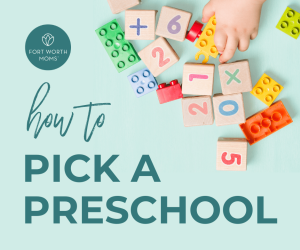 How many times have we sat across from a friend over coffee and listened to her divulge her latest mom frustrations or marriage woes? Her career isn’t where she’d hoped. The heaviness of life threatens to pull her down. How many more times have those stories been accompanied by tears, then quickly followed by “I’m sorry.”
How many times have we sat across from a friend over coffee and listened to her divulge her latest mom frustrations or marriage woes? Her career isn’t where she’d hoped. The heaviness of life threatens to pull her down. How many more times have those stories been accompanied by tears, then quickly followed by “I’m sorry.”
A flash of vulnerability. A wiping away of tears, of the pain brought to the surface. A sharing hangover on its heels.
Why are women willing to share, but in almost the same breath, we regret opening ourselves and apologize for revealing the emotions that lay under the surface? Friend, put your coffee down. Look me in the eye and let your tears flow.
Mixed Messages
I have one of those standard wood-pallet, farmhouse-style signs hanging in my home that reads “Chin Up, Buttercup.” It called to me from the clearance shelf at Marshall’s. I’m drawn to the idea of putting on my big girl britches and handling my business. Life won’t just give you anything, girl! Pick up your head and solider on!
There are other, less-dated phrases we’ve adopted in a culture of making things happen like slay, girl boss, and grind. But now — more than ever in history — women are kicking butt and taking names. We live in inspiring times! But it seems as if we have developed a distorted way of thinking about our ability to be this very awesome.
There’s an undercurrent of “either/or.” We are either boss babes of our empire or we can be real and transparent with those around us. What gives us the idea it can’t be both? We embrace the lie that strength is only letting people in so far. We overlook the idea that emotional strength is actually found in sharing our weakness.
Letting another into our real and raw places is good. It is, in fact, a connection to the other incredible women in our lives. It is possible to slay and get comfortable with vulnerability.
>> RELATED READ :: How to Make Mom Friends as an Introvert <<
On Being a Friend to Ourselves
I’d like to think very few of us would look at our teary-eyed friend across the table from us and tell her to stop crying. What I have experienced is quite the opposite. The hurried “I’m sorry” by the sharing friend is usually met with “It’s okay!” or “Don’t apologize!” by the listener.
No one should be shamed for their honesty and their correlating emotions. But here’s where it gets sticky, y’all: We often hold ourselves to this unfair standard. We offer up our feelings, our hurts, our struggles to someone we trust. The tears want to follow, but we swat them away. We attempt to gather up the collected version of ourselves. Nothing to see here. I’m fine.
Except it’s not fine at all. We cannot be both the sympathetic listener and the reserved sharer. To break the cycle of the sharing hangover, we need to let ourselves be as vulnerable as those we’re willing to listen to.
In short, the great friend you are to others? Yeah, it’s time to be her to yourself.
 On Being a Friend to Others
On Being a Friend to Others
As I’m working to change the narrative of vulnerability in my own life, I’ve adopted new language for those moments a friend is clearly trying to regain composure and “lock it up.”
Instead I say, “Thank you for being willing to cry in front of me. Being in this moment with you is a privilege.”
The message is clear. Friend, this is a safe place to let yourself respond to what’s going on inside right now. I will be your person while you feel these feelings. Going the extra step with these words can be a healing balm, not just for the friend in front of you on the verge of becoming a puddle. Relaying these words of comfort is a reminder to yourself. Feelings are okay. Tears are cathartic. You will actually feel better if you let go.
Our Kids and Emotions
What are we demonstrating for our kids when we batten down the emotional hatches? When you’ve been crying and your child walks in and asks what’s wrong, you have an opportunity.
As much as is appropriate for your kiddo’s age, I submit a teachable moment can be found in saying, “I’m feeling really sad because . . . ” or “I’m angry with myself for . . . .”
We can actually bond with our little ones by connecting over shared emotions and by demonstrating a safe place for expression. Kids know what it feels like to be scared, angry, or disappointed. To see a parent experience similar lows and openly share can be a source of comfort.
Difficult emotions are part of the patchwork of life. To practice naming these emotions and feeling them in the home is an excellent foundation. Emotionally strong individuals are who we want to send out into the world one day.
>> RELATED READ :: Teaching Our Kids to Lament <<
Life is fleeting, friend. It’s time to do the work of vulnerability. It benefits, not just yourself, but younger generations who are watching.













